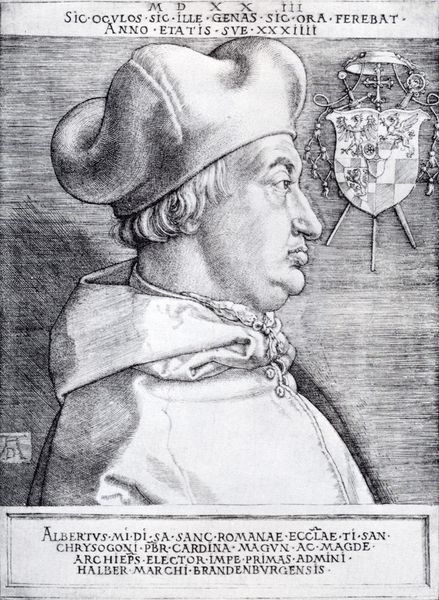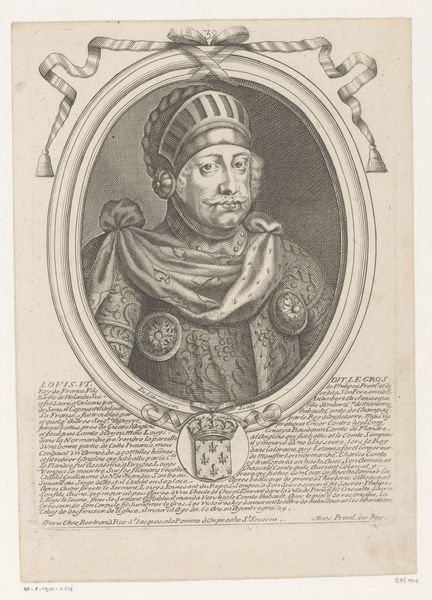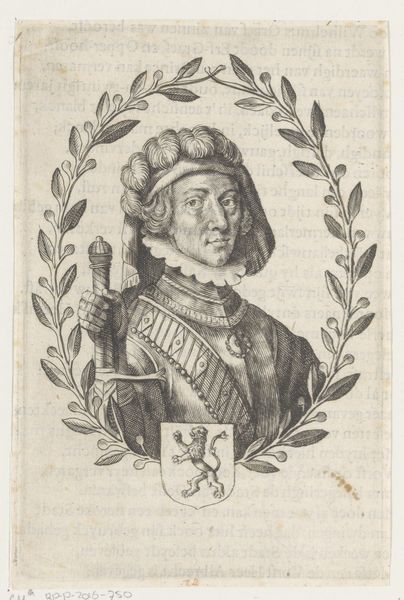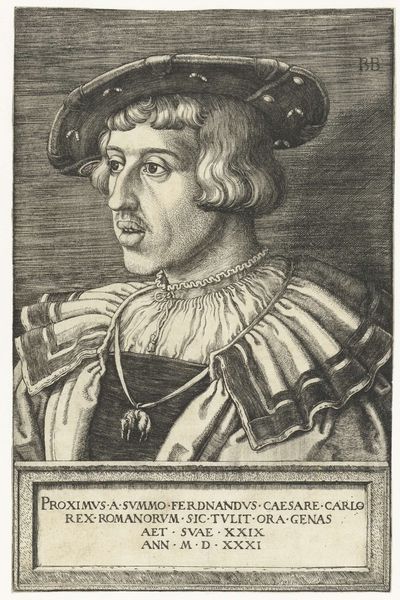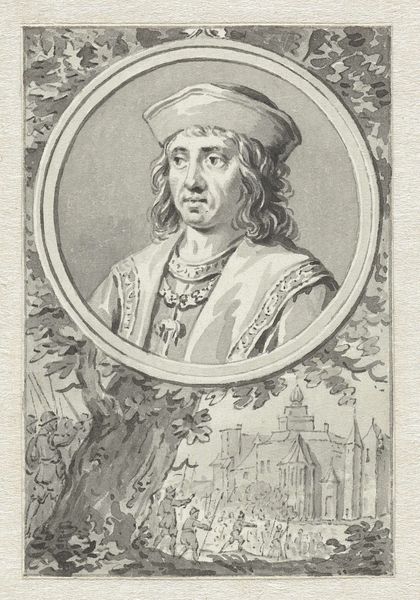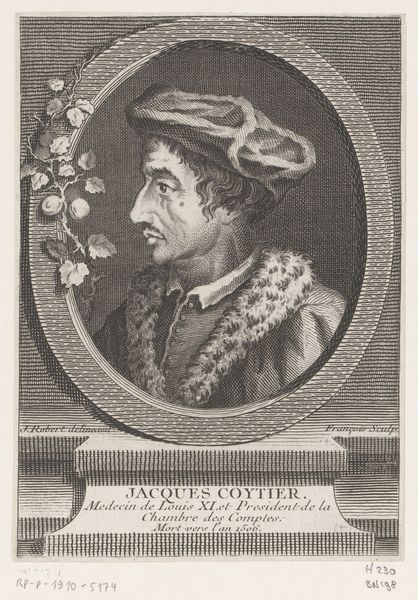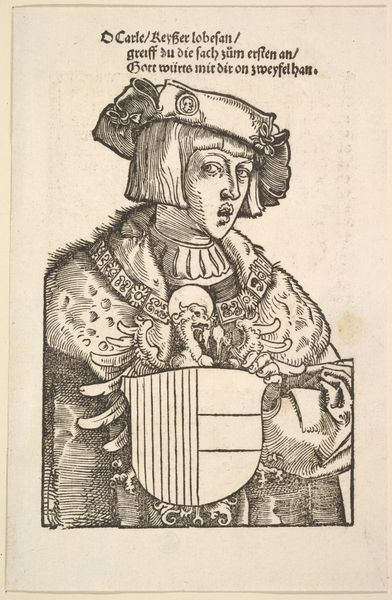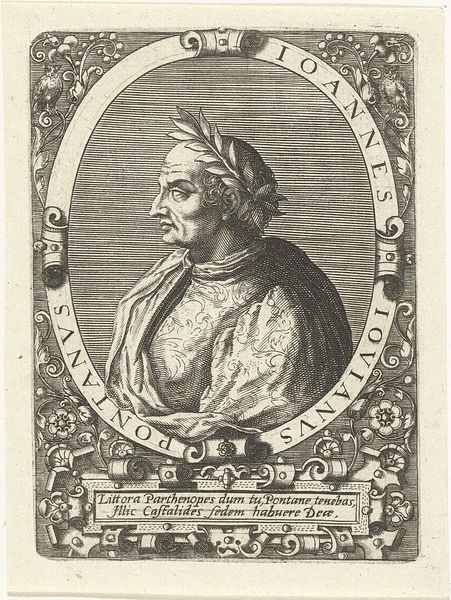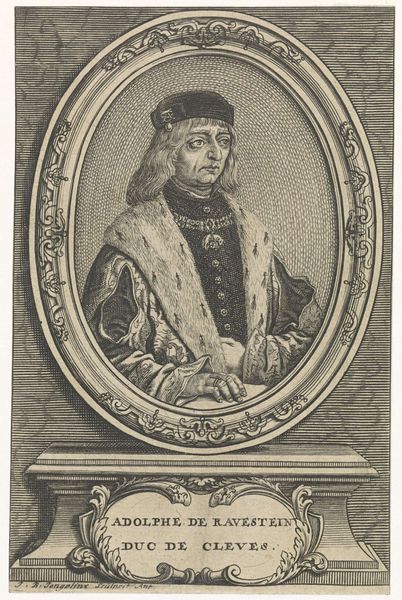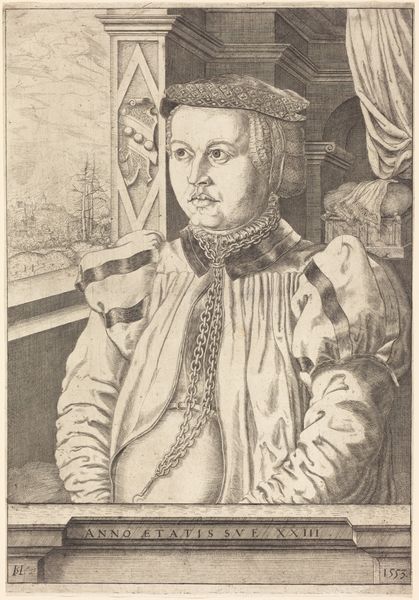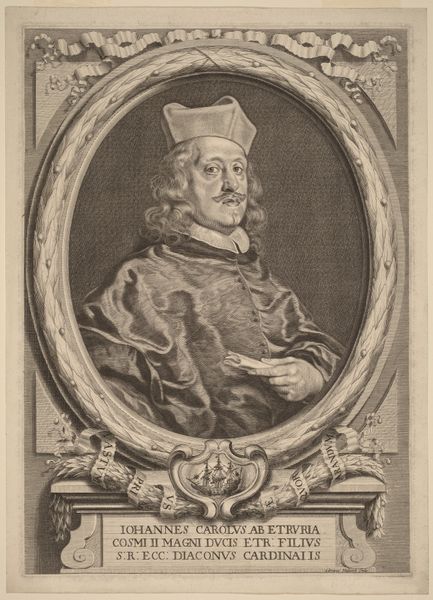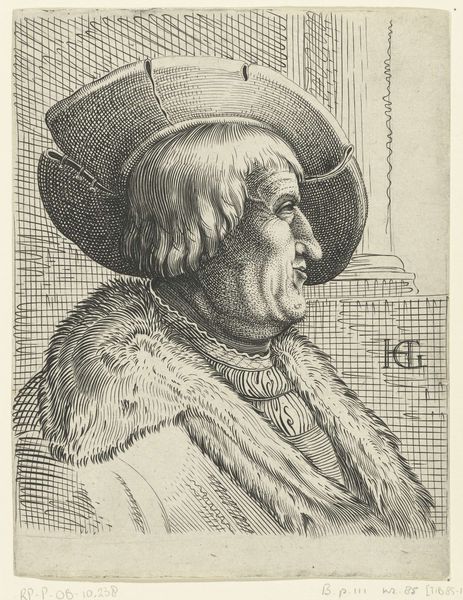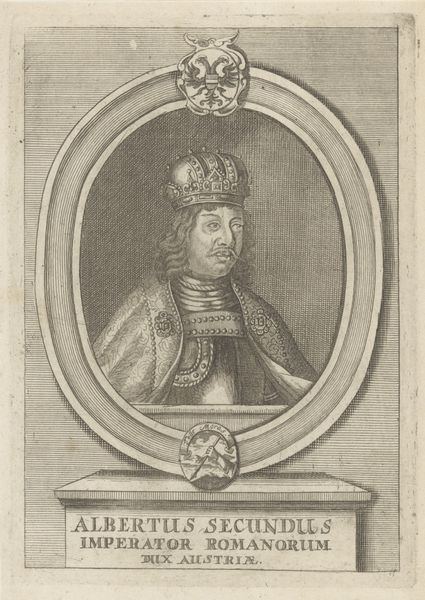
Portret van kardinaal Albert van Brandenburg op 34-jarige leeftijd 1523
0:00
0:00
albrechtdurer
Rijksmuseum
print, graphite, engraving
#
portrait
# print
#
form
#
11_renaissance
#
line
#
graphite
#
northern-renaissance
#
engraving
#
realism
Dimensions: height 174 mm, width 126 mm
Copyright: Rijks Museum: Open Domain
Editor: Here we have Albrecht Dürer's "Portrait of Cardinal Albert of Brandenburg at Age 34," created in 1523. It's a print, so likely an engraving or etching. I am immediately struck by the starkness of the lines, creating such a formal and imposing figure. What do you see in this piece, considered from a formalist perspective? Curator: Initially, I observe the pronounced linearity dominating the composition. Dürer masterfully utilizes line not only to define form, evident in the subject's profile, but also to create tonal variations. Consider the density of hatching and cross-hatching that renders depth and shadow. Notice how the contrasting textures achieved purely through the manipulation of line articulate different materials, such as the fabric of the cardinal's hat versus the smoothness of his face. How does this affect the overall viewing experience, do you think? Editor: I think the focus on line almost flattens the image despite the shading. It feels deliberate, as though Dürer is more concerned with presenting the essential form than creating an illusionistic likeness. Does the inclusion of the text at the top contribute to the work’s form? Curator: Precisely. The inscription is not merely an addendum; it is formally integrated. The letterforms and their arrangement act as another layer of graphic elements, mirroring the meticulous detail present in the cardinal’s portrait. The text creates visual balance with the coat-of-arms on the right, providing both symmetry and textual grounding. What about the use of symmetry within the portrait itself? Editor: I hadn’t noticed, but the hat mirrors the shape of the shoulder cape. I see now it's a play on visual echoes that give the print a sense of compositional balance. It makes me appreciate the image's intentional design. Curator: Yes, by examining elements like line, shape, and form, a renewed depth of understanding comes forward that speaks beyond simple representational image making. Editor: Absolutely, considering those relationships in Durer’s portrait makes it more powerful and carefully constructed than I initially thought.
Comments
No comments
Be the first to comment and join the conversation on the ultimate creative platform.
